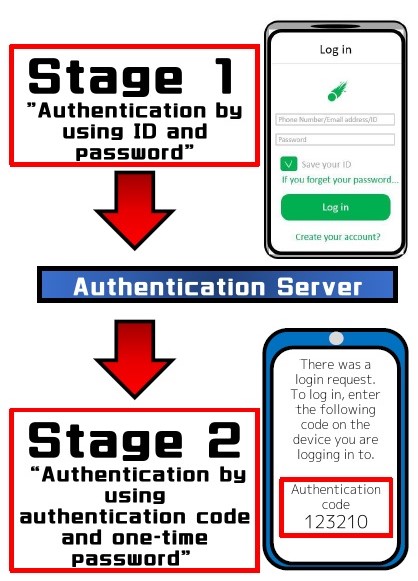

|
"ID" is an identifier assigned by the provider
of an information device or service to distinguish individual users. It is the same when you log in to Twitter or LINE.
A password, on the other hand, is information
that only the person to whom the ID is assigned knows,
and is used for identity verification.
These two types of information prevent unauthorized use of services by third parties. Unfortunately, we don't completely prevent abuse... This can change your impression of yourself unintentionally,
We've mentioned that you need to be careful about managing passwords and "ID"
so you don't feel bad about being impersonated, but there are
3 effective ways to prevent unauthorized use:
It's been said that "Change passwords frequently", but it's getting more and more troublesome, and people end up with
"I'll change the password, but it's the same as before." or "something simple" so it's not recommended much.
However, if you can make it solid every time, it will be a very effective means. |
(Made by "Team Graynet") |
 ※This is how "Two-factor authentication" works. |
"Two-factor authentication" is a system to use the service more safely
by verifying the identity as well as ID and password.
The mechanism for generating a password that is valid only once is called "Token".
Tokens are tokens, but there are various tokens.
The common features of the (One Time) password obtained in the two-step authentication are as follows:
As the name suggests, once used, the password is disabled. |
|
In addition to two-step authentication, there is another type called "Two-factor authentication and multi-factor authentication".
In addition to "ID" and "Password", biometric information such as "fingerprint" and "retina" is used.
The difference between the two is Let's be careful not to mix up. |
|
 ※"s" in "https://" is "secure". |
Do you ever feel like you don't want to know what you're looking at? Also, in Google Chrome, Internet Explorer, and other browsers, when you visit a page that has "SSL" installed, a lock appears near the "address bar" button, and you can click on it to check "Certificate of the SSL server". |
||||||||||||||||||||||||
※Made in さくらのSSL |
SSL server certificate? WHAT'S THAT? I'm glad you asked. Let me explain! The type and cost of
the certificate will vary depending on the assurance level based on the review of the website operator's identity. I can't afford it. |

Next, I recommend you to learn "Society5.0" of "Future world"!